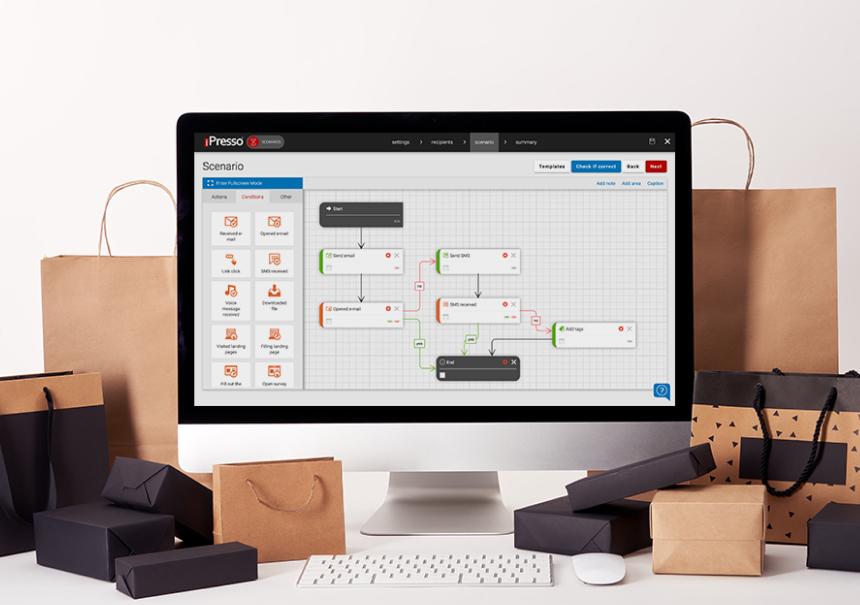What is content gap?

By “tolerating” the existence of a content gap in your content, you increase the risk of losing potential leads – people who could otherwise become loyal, returning customers. How to avoid the content gap, what does this term mean and how can Marketing Automation help with it?
Content gap means a gap in content – a challenge that companies operating online often struggle with. In short, it is the difference between customer needs and the content that is available on websites or in marketing campaigns. The user enters the phrase he is looking for in the search engine, then – thanks to SEO or paid campaigns – your website appears at the top of the search list, so the customer enters the website and… does not find what he was looking for. Inevitably, they quickly leave the website and go to the competition’s websites.
Content gap – definition
It all started a dozen or so years ago, when Google strongly focused on the quality of content on websites. It was no longer enough to saturate your website with the right amount of proven keywords. From then on, indexing robots also took into account whether the content on the website was sensible and actually useful.
Marketers reacted very quickly. There has been a real outpouring of blogs, guide articles and – which is becoming more and more fashionable these days – podcasts. However, the more content was created, the more it began to deviate from the original SEO assumptions, i.e. from a reasonable compromise between the quantity and quality of keywords and the content that uses and complements these keywords well. So we can say that creating content without paying attention to SEO rules is the definition of content gap.
In other words, the content gap is insufficient information about products, lack of content appropriate for various stages of the customer’s purchasing path or – in the worst cases – simply inadequate answers to frequently asked questions. It is difficult to expect loyalty and interest from a user who does not get on our website what he or she searched for and what was displayed in the search engine.
What are the consequences of the content gap?
Publishing a large amount of content without prior selection of appropriate keywords is a waste of time, resources and budgets allocated to online campaigns – because what does it matter if you have prepared a great creation and reach people potentially interested in your product, if the content they ultimately reach after… clicking on the ad does not correspond to their expectations?
The lack of keywords in the content has consequences in the form of lower website traffic, shorter session duration (because customers leave disappointed) and, above all, a lower conversion rate, which translates into lower sales.
In addition, you are at risk of losing your position in search results – the lack of content that meets users’ expectations will most likely negatively impact your website’s positioning, because search engine algorithms prefer websites with valuable content that meets user queries.
Let’s not forget about bad customer experiences. The lack of expected content will certainly lead to disappointment among users, which will translate into dissatisfaction with the visit to the website – which is worthless from their point of view – and leaving without taking the desired action. Not to mention the fact that if the competition offers better and more tailored content, users will most likely choose that content. This approach also means it is very difficult to build trust in the brand and website, and in today’s competitive environment, loyalty is the key in online interactions with customers.
How to check if there is a content gap in your content?
Fortunately, we are not completely defenseless and we can quickly check whether there is a content gap in our content. The sooner we find where these vulnerabilities exist, the sooner we can fix them.
Web analytics – view traffic data on your website. Check which content is most frequently visited, which pages users visit and where the highest number of views occurs. Then compare this information with user expectations or topics that are popular in your industry. A large discrepancy in the data may indicate a content gap.
You can also ask users for feedback on the content presented on your website. Surveys, feedback, or comments can reveal whether there are gaps in your content relative to your audience’s expectations. They will be useful for this, for example NPS surveys available in iPresso.
Research the keywords (for example, use Google Keyword Planner) that users use in search engines and compare them to the content you offer. Think about whether your current content actually answers the most popular questions and needs of users, or maybe it is just an attractive headline without any valuable content for customers?
Also compare yourself with your competitors and examine what content is on their sites. Maybe they are more comprehensive, extensive and better suited to the needs of users? This comparison will help reveal gaps in your own content.
How will Marketing Automation help you avoid the Content Gap?
Research and analysis – marketing automation tools allow for in-depth analysis of user behavior. By monitoring interactions, demographics, and preferences, you can identify areas on your website that are lacking relevant content.
Content personalization – automation is the delivery of personalized content, depending on user preferences and behavior. Thanks to this, you will meet their various needs, eliminating content gaps.
Purchasing path tracking – Marketing Automation monitors the stages that users go through from the beginning of their interest in the product to its final purchase. Appropriate content delivered at the right times reduces the content gap and increases conversions.
Automatic content creation – using, for example, Feed Manager you can generate content for customers automatically, responding to specific customer needs and questions, which will help you eliminate the Content Gap faster.
Summary
Content Gap can negatively impact user experience and business results. However, the use of marketing automation tools is becoming a key element in eliminating these gaps, through personalization, data analysis and delivering relevant content at the right time. This allows for a better understanding of customer needs and building lasting relationships, which translates into more effective marketing strategies and increased conversions.



